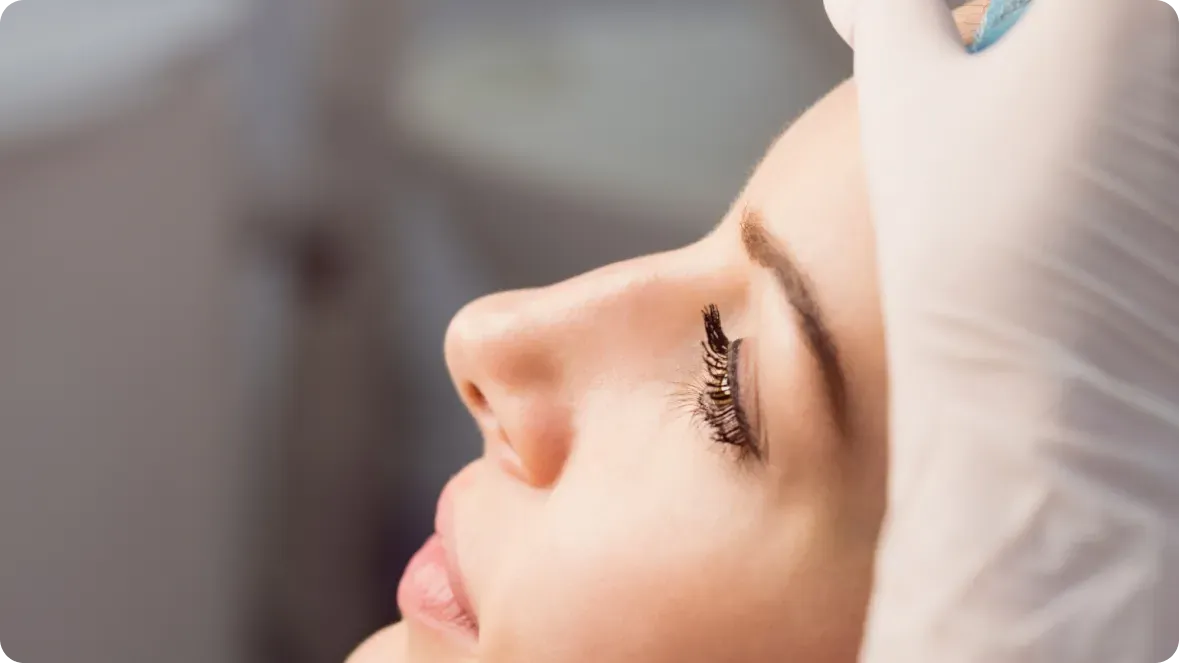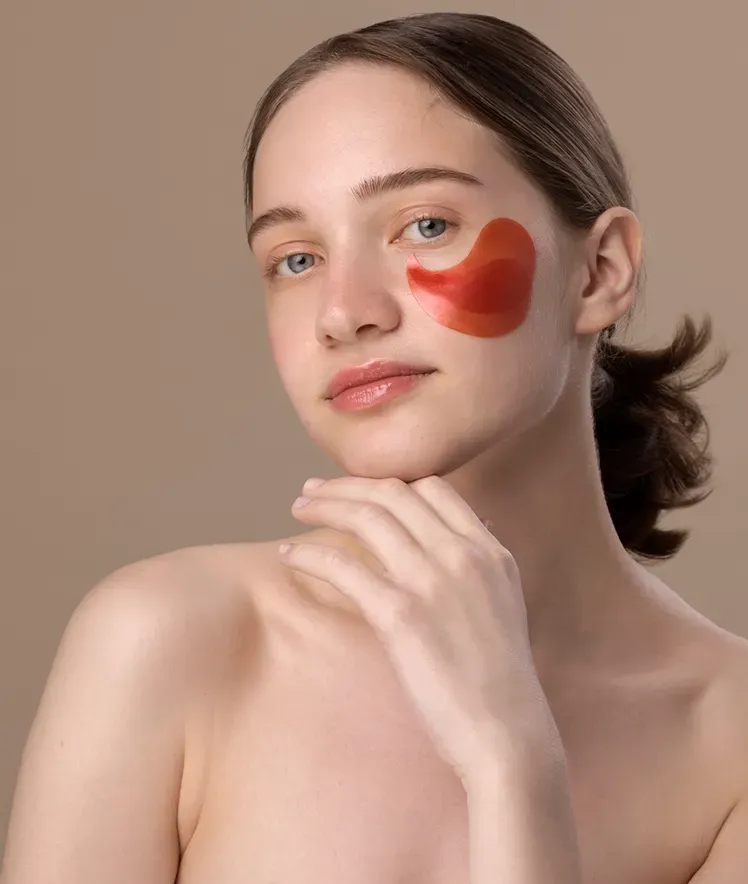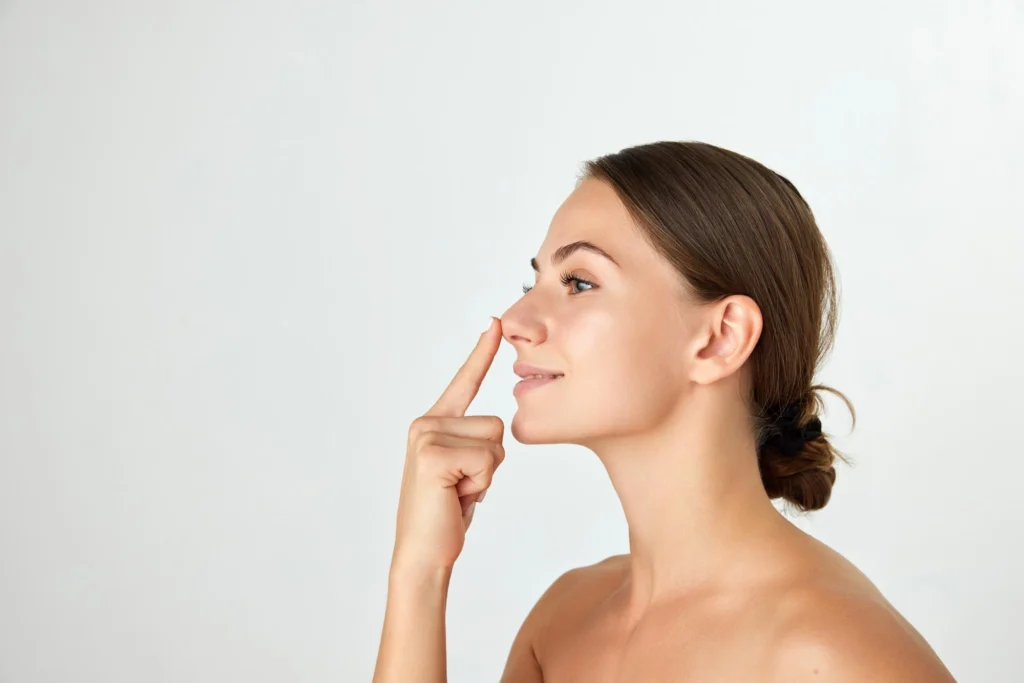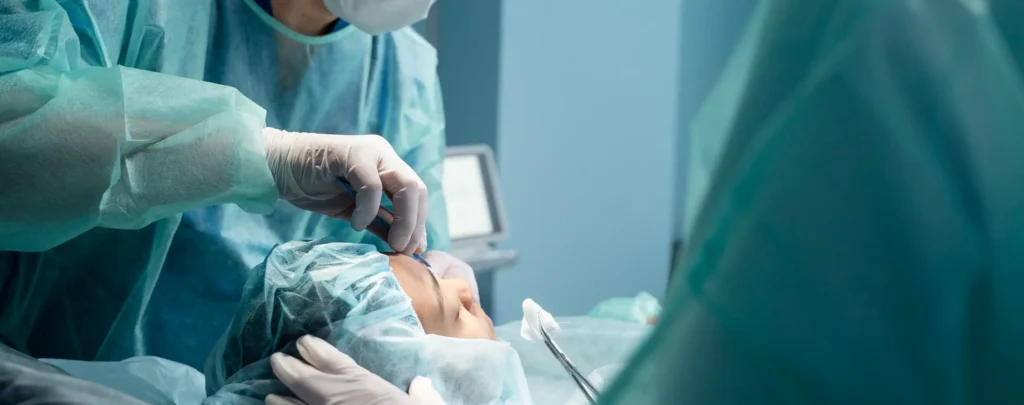Male vs. Female Rhinoplasty: Different Goals, Different Outcomes — Anatomical, Aesthetic, and Technical Distinctions
November 3, 2025
Rhinoplasty is never one-size-fits-all. Beyond fixing form and function, it has to respect sex-based facial differences, gender identity, ethnic features, and your personal taste. Small choices about radix height, the dorsal line, tip rotation, and alar base width can make a nose read distinctly masculine, feminine, or purposely neutral—while still breathing well.
This article breaks down how aesthetic ideals and surgical tactics typically differ between male and female rhinoplasty. It also looks at how these ideas translate to gender-affirming care and across diverse ethnicities. The big goal? Help patients and clinicians speak the same language, align expectations, and make choices that protect both beauty and function for the long haul.
This article breaks down how aesthetic ideals and surgical tactics typically differ between male and female rhinoplasty. It also looks at how these ideas translate to gender-affirming care and across diverse ethnicities. The big goal? Help patients and clinicians speak the same language, align expectations, and make choices that protect both beauty and function for the long haul.
Defining Sex-Based Nasal Aesthetics and Gender-Informed Objectives
Understanding craniofacial differences and aesthetic norms gives you a starting point. These are guidelines—not hard rules—and they should be adapted to gender identity, overall facial proportions, and cultural background.
Craniofacial dimorphism
- Radix height: Men often look best with a slightly higher radix (the root of the nose) in line with or just above the supratarsal crease, creating stronger brow-to-tip lines. Women typically prefer a slightly lower radix to soften the dorsum.
- Dorsal contour: A straight to subtly convex dorsum scans as masculine. A straight to mildly concave dorsum with a delicate supratip break reads more feminine.
- Tip projection and rotation: Male tips generally project more with restrained rotation; female tips tend to have a touch less projection but more rotation.
- Alar base width: A common baseline is equal to the intercanthal distance. Men often tolerate—or even want—a slightly wider base; women sometimes opt for modest narrowing.
Idealized parameters by sex (typical targets)
- Dorsal aesthetic lines: Smooth, symmetric lines from brow to tip—usually stronger in men, softer in women.
- Nasofrontal angle (root/brow): Men ~115–130°, women ~120–135°.
- Nasolabial angle (columella/upper lip): Men ~90–95°, women ~95–110°.
- Goode ratio (tip projection to nasal length): Often 0.55–0.60; closer to 0.55 in men and up to ~0.60 in women, customized to facial length and chin projection.
Cutaneous envelope variables
- Thicker, more sebaceous skin—common in men, especially in the lower third—softens definition and prolongs swelling. It demands sturdier structural support and a realistic view of how crisp the tip can look.
- Thin skin (more often in women but seen across sexes) shows definition beautifully but also telegraphs irregularities; meticulous dorsal smoothing and camouflage matter more.
Gender identity, ethnic morphology, and personalized targets
- Gender identity helps place the nose along the masculine–feminine spectrum. A transmasculine patient might want a higher radix and straight dorsum; a transfeminine patient may prefer more rotation and a gentler profile.
- Ethnic nasal characteristics (e.g., low radix, alar flare, bulbous tip, dorsal hump) require culturally competent planning. The aim is enhancement—not “Westernization”—with deep respect for heritage and function.

Comprehensive Preoperative Assessment
A thorough workup ensures the plan matches the look you want and protects your airway.
Photographic analysis and 3D morphing
- Standardized photos (frontal, lateral, oblique, base views) reveal asymmetries and inform the plan.
- 3D simulation helps set expectations for dorsal shape, tip position, radix height, and alar base adjustments — with masculine vs. feminine endpoints side-by-side. It’s a conversation tool, not a guarantee.
Functional evaluation
- Endonasal exam for septal deviation, perforations, spurs, and turbinate hypertrophy.
- Nasal valve assessment (internal and external) using dynamic maneuvers (Cottle, modified Cottle), endoscopy, and, when useful, objective metrics (e.g., NOSE or SCHNOS functional subscale, peak nasal inspiratory flow, acoustic rhinometry).
- History of trauma, prior rhinoplasty, or sleep-disordered breathing influences planning and graft options.
Expectation setting and patient-reported outcomes
Tools like the Rhinoplasty Outcome Evaluation (ROE), SCHNOS, and FACE-Q modules capture baseline and follow-up data—so goals are aligned and success is measurable.
Ethical and counseling considerations
- In gender-affirming rhinoplasty, the plan should reflect the patient’s gender expression and lived experience; a multidisciplinary team can help. Avoid stereotypes—co-create a plan that harmonizes the nose with the face.
- For everyone, discuss trade-offs: aggressiveness vs. stability, subtlety vs. big change, and the time course for swelling and scar maturation.
Operative Strategy: Technique Selection by Aesthetic Goal
Technique choices map directly to the desired look and functional needs. The surgeon’s toolbox is robust—the art is in mixing methods to achieve sex- and gender-specific outcomes without compromising the airway.
Dorsum management
- Preservation rhinoplasty: Push-down or let-down techniques keep native dorsal lines and the keystone area intact, reducing “open sky” irregularities. Great when existing lines are good and a straight or slightly convex profile (often favored in men) is the goal.
- Component dorsal reduction: Classic hump reduction with roof reconstruction and osteotomies allows precision—useful for a slight feminine concavity or asymmetric hump correction.
- Radix modification: A low radix can be augmented with crushed septal cartilage, diced cartilage–fascia (DCF), or soft-tissue grafts to strengthen the brow-tip line; an overly high radix can be carefully reduced to soften the profile.
Tip mechanics and projection/rotation control
- Structural support: A columellar strut stabilizes the tip; a septal extension graft (SEG) offers fine control of rotation and projection—handy for a more rotated feminine tip or a firmly projected masculine tip.
- Suture techniques: Transdomal, interdomal, lateral crural spanning, and septocolumellar sutures shape the tip and improve symmetry. Overly sharp domal definition can feminize a male nose; too soft a contour can under-define a female tip if tissues are thick.
- Maneuvers: Lateral crural steal can increase rotation and refine the tip—useful for a feminine result. Counter-rotation and stronger projection with SEG and shield grafts can masculinize.
Alar and base modifications
- Cephalic trim: Go conservative in men to avoid an over-refined, pinched look. In women, a bit more trimming may suit the goals—but always preserve at least 6–7 mm of lateral crura for airway and rim stability.
- Lateral crural repositioning or strut grafting: Improves external valve function and sculpts the alar margin; subtle tweaks can feminize or masculinize the curve.
- Alar base reduction: Sill, wedge (Weir), or combined excisions address width and flare. Men typically keep a slightly wider base; over-reduction risks feminization. Scar placement in natural grooves and the nostril sill is key for everyone.
Grafting and camouflage
- Septal cartilage is first choice for most grafts. Auricular cartilage offers natural curvature (great for alar batten or rim grafts). Costal cartilage brings volume for major augmentation—common in revisions or significant masculinization; mitigate warping (balanced carving, K-wires, or diced techniques).
- Diced cartilage–fascia (DCF) smooths fine dorsal irregularities and allows final polish after osteotomies—especially valuable under thin skin (to soften edges) and over thick skin (to build gentle contours).

Intraoperative Nuance and Risk Management
The devil’s in the details—small choices add up to sex- and gender-consistent results while preventing problems.
Maintain structural support
- Keep a strong L-strut (at least 10–12 mm dorsal and caudal) to avoid late tip droop, which can masculinize a feminine nose—or deflate a masculine one.
- Rebuild the middle vault with spreader grafts or flaps after dorsal reduction to prevent internal valve collapse and inverted-V deformities.
- Don’t over-resect alar cartilages; a pinched tip looks over-feminized and weakens the external valve.
Thick-skinned noses
- Limited, precise defatting in the supratip and tip (within the sub-SMAS plane) can sharpen definition; over-thinning risks blood supply and prolongs swelling.
- SMAS handling: Gentle redraping and conservative trimming help the envelope adapt.
- Edema control: Meticulous hemostasis, taping/splinting, and judicious postoperative intralesional corticosteroids (e.g., triamcinolone) help prevent a soft-tissue pollybeak.
Hemostasis and ecchymosis reduction
- Tumescent infiltration with epinephrine, hypotensive anesthesia, and careful osteotomies minimize bruising.
- Topical or systemic tranexamic acid (per protocol) can further reduce bleeding and swelling.
Intraoperative assessment
- Recheck dorsal aesthetic lines, radix transition, and the tip–supratip relationship after each step.
- Aim for a straight male profile from radix to tip without a supratip break; for a feminine nose, retain a soft supratip dip with more rotation—avoid over-reduction that creates an unnatural scoop.
Outcomes, Recovery, and Long-Term Follow-Up
Recovery patterns and revision tendencies often mirror skin thickness, cartilage strength, and aesthetic targets.
Edema and scar maturation
- Splints usually come off at 5–7 days; early swelling settles over 2–4 weeks.
- Tip swelling lingers: 6–12 months for thin to moderate skin, 12–18 months (or more) for thick skin—more common in men. Set expectations early.
- External scars (columellar, alar base) mature over 6–12 months. Darker skin tones may pigment more; gentle care and sun protection matter.
Objective evaluation and timing of revision
- Track function with NOSE or SCHNOS scores and, when available, objective airflow testing.
- Assess symmetry, dorsal smoothness, and tip stability at regular intervals. Minor contour issues can sometimes be blended with small-volume hyaluronic acid fillers after 6–12 weeks; definitive revision is usually delayed until after 12 months.
Common revision patterns by sex-specific goals
- Male rhinoplasty: Over-reducing the dorsum or over-rotating the tip can feminize the profile. Skimping on middle vault support can cause an inverted-V and midvault narrowing. Leaving a high radix under-corrected disrupts the brow-tip line.
- Female rhinoplasty: Persistent supratip fullness (soft-tissue pollybeak) is more likely with thick skin. Under-rotation yields a heavier, less feminine tip. Over-narrowing the alar base risks unnatural nostril shape and airflow issues.
- Mitigation strategies: Favor conservative reduction with smart camouflage, use stable grafts (SEG, spreaders), and shape—don’t over-resect—alar cartilages. Control edema proactively in thick-skinned patients.
Long-term stability
- Rib grafts can warp more; balance carving, consider internal stabilization, and use DCF where appropriate.
- Soft-tissue contraction and aging can drop the tip and lengthen the nose over time. A strong framework—especially with a well-positioned SEG—helps maintain rotation and projection, preserving gender cues.
- Ongoing skin care and weight stability influence the envelope—coach patients on both.
Practical Examples
- Masculinizing objectives (cis male or transmasculine)
- Raise a low radix with DCF or cartilage, keep the dorsum straight, maintain firm tip projection with limited rotation (NLA ~90–95°), and preserve a slightly wider alar base.
- Use an SEG for solid tip support, modest domal definition (avoid a pinched look), and spreader grafts to keep the middle vault strong.
Feminizing objectives (cis female or transfeminine)
- Reduce or smooth a hump to a straight or subtly concave profile with a gentle supratip break, slightly lower radix, and increased rotation (NLA ~95–110°) with balanced projection (Goode ~0.57–0.60).
- Combine an SEG or columellar strut with tip sutures to refine the domes; consider limited cephalic trim and alar base narrowing when width exceeds intercanthal guidelines—careful, discreet scars are a must.
Ethnically sensitive planning
- For a naturally low radix and thicker skin, radix augmentation plus conservative dorsal refinement can deliver a refined yet authentic result—without erasing ethnic identity.
- For a strong dorsal hump and thin skin, component reduction with meticulous rasping, spreader grafts, and fine DCF camouflage prevents visible edges and protects the valve.

Conclusion
Male and female rhinoplasty differ in more than vocabulary—they diverge in structural priorities, soft-tissue behavior, and the techniques needed for long-lasting, natural results. Masculine noses tend to emphasize strength—higher radix, straight dorsum, firmer projection with restrained rotation. Feminine noses usually lean into softness—a slightly lower radix, gentle dorsal concavity, more rotation, and refined definition. And yet, every plan should be individualized, tuned to gender identity and ethnic context, and anchored in function.
The best outcomes come from rigorous pre-op analysis, precise intra-op execution, and patient-specific recovery strategies. When surgeon and patient are on the same page—and respect how anatomy and aesthetics play together—rhinoplasty can deliver noses that look authentic, breathe well, and age gracefully. What more could you ask for?
The best outcomes come from rigorous pre-op analysis, precise intra-op execution, and patient-specific recovery strategies. When surgeon and patient are on the same page—and respect how anatomy and aesthetics play together—rhinoplasty can deliver noses that look authentic, breathe well, and age gracefully. What more could you ask for?

Schedule Your Appointment with Dr. Mourad
If you are considering facial plastic surgery and want results that enhance your natural beauty without looking overdone, schedule a consultation with Dr. Moustafa Mourad today. You will receive personal, expert guidance at every step—from your first visit to your final result.
From Our Blog

November 7, 2025 | Dr. Moustafa Mourad | Uncategorized
How Long Until the Final Result? The Truth About Swelling, Shape Changes, and Patience After Rhinoplasty — Managing Expectations
Rhinoplasty is both a structural procedure and a healing journey. Everyone wants to know: when will I see “the final nose”? Fair question—just not a simple one. Bones, cartilage, skin, and mucosa recover on different timelines; swelling fades in waves; and the tip keeps evolving long after the splint comes off. The good news? When expectations match biology and timing, uncertainty turns into confidence. Here’s what happens, why it happens, and how to navigate the process with realistic checkpoints and smart strategies.
READ THE ARTICLE
November 7, 2025 | Dr. Moustafa Mourad | Uncategorized
Revision Rhinoplasty: Why Some Patients Need a Second Nose Job and What to Ask — Less Common but High Value
Elective rhinoplasty is one of the most technically demanding operations in facial plastic surgery. Even when everything goes “right,” tiny asymmetries, how scars mature, or lingering breathing issues can blunt an otherwise good first result. Most people are happy after their primary surgery. But a meaningful minority—often quoted in the literature as about 5–15%—consider a revision.
READ THE ARTICLE
November 7, 2025 | Dr. Moustafa Mourad | Uncategorized
What Age Is Appropriate for Rhinoplasty? Teen Patients and Adults — Evidence-Based, Age-Related Considerations
Rhinoplasty is one of the most personalized procedures in facial plastic surgery. Age matters—a lot. Not just the number on a birth certificate, but where someone is in facial growth, psychological readiness, and overall health. This guide pulls together the current thinking on how age affects candidacy and planning, comparing teen and adult patients and laying out practical safeguards that keep results safe, predictable, and natural.
READ THE ARTICLE
November 6, 2025 | Dr. Moustafa Mourad | Uncategorized
The Role of Skin Thickness, Nasal Cartilage, and Bone Structure in Your Rhinoplasty Outcome — An Anatomical Deep‑Dive
Every patient wants to know how long recovery will take after their facial plastic surgery procedure. The answer is that recovery isn’t the same for everyone. The timeline depends on the type of facial plastic surgery you choose, your individual healing response, and how closely you follow aftercare instructions. While some procedures allow you to return to regular activities within a week, others require several weeks before you feel fully comfortable in public. The key is understanding that recovery is a process, and each stage brings you closer to the final results you’re excited to see.
READ THE ARTICLE